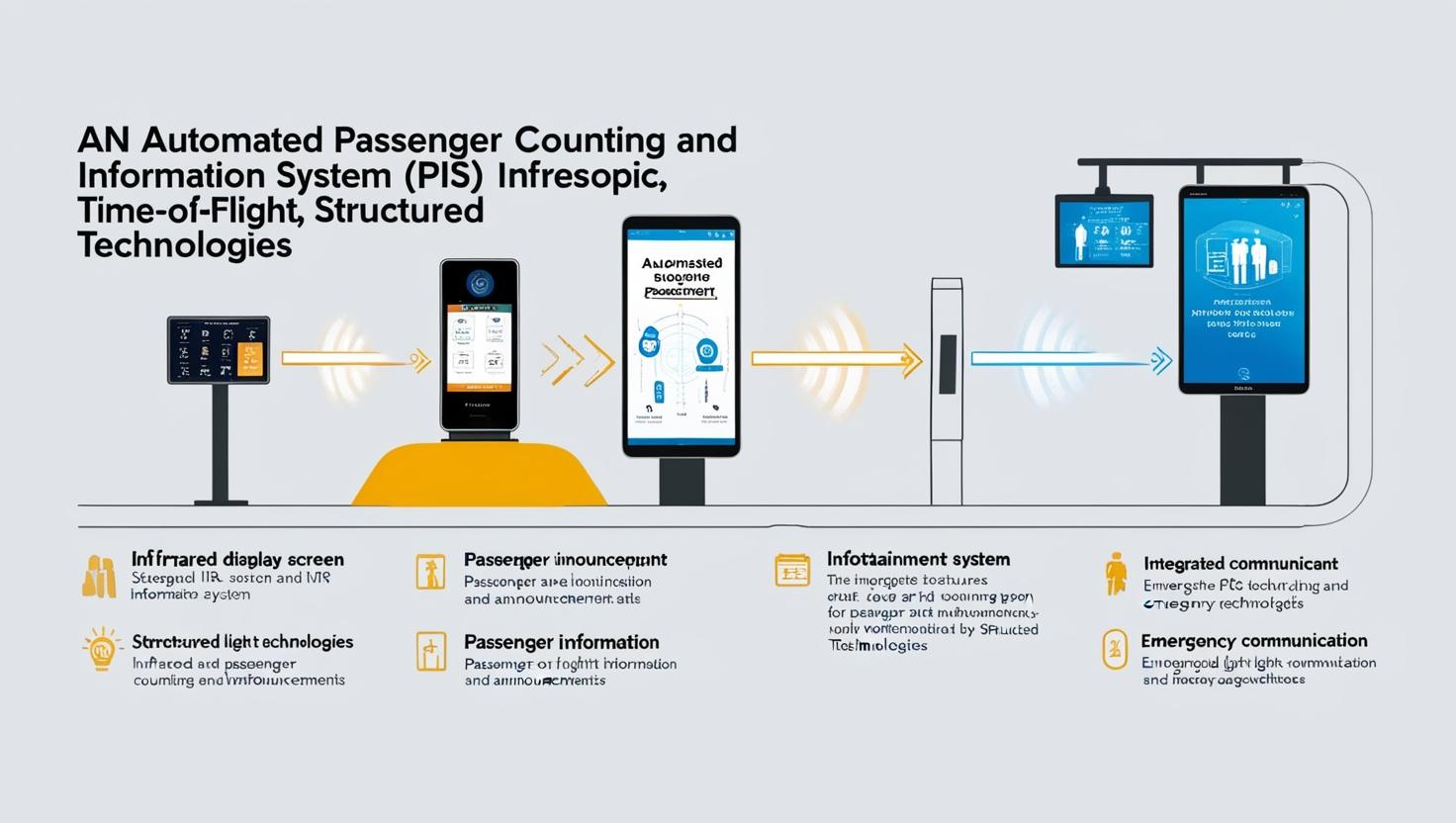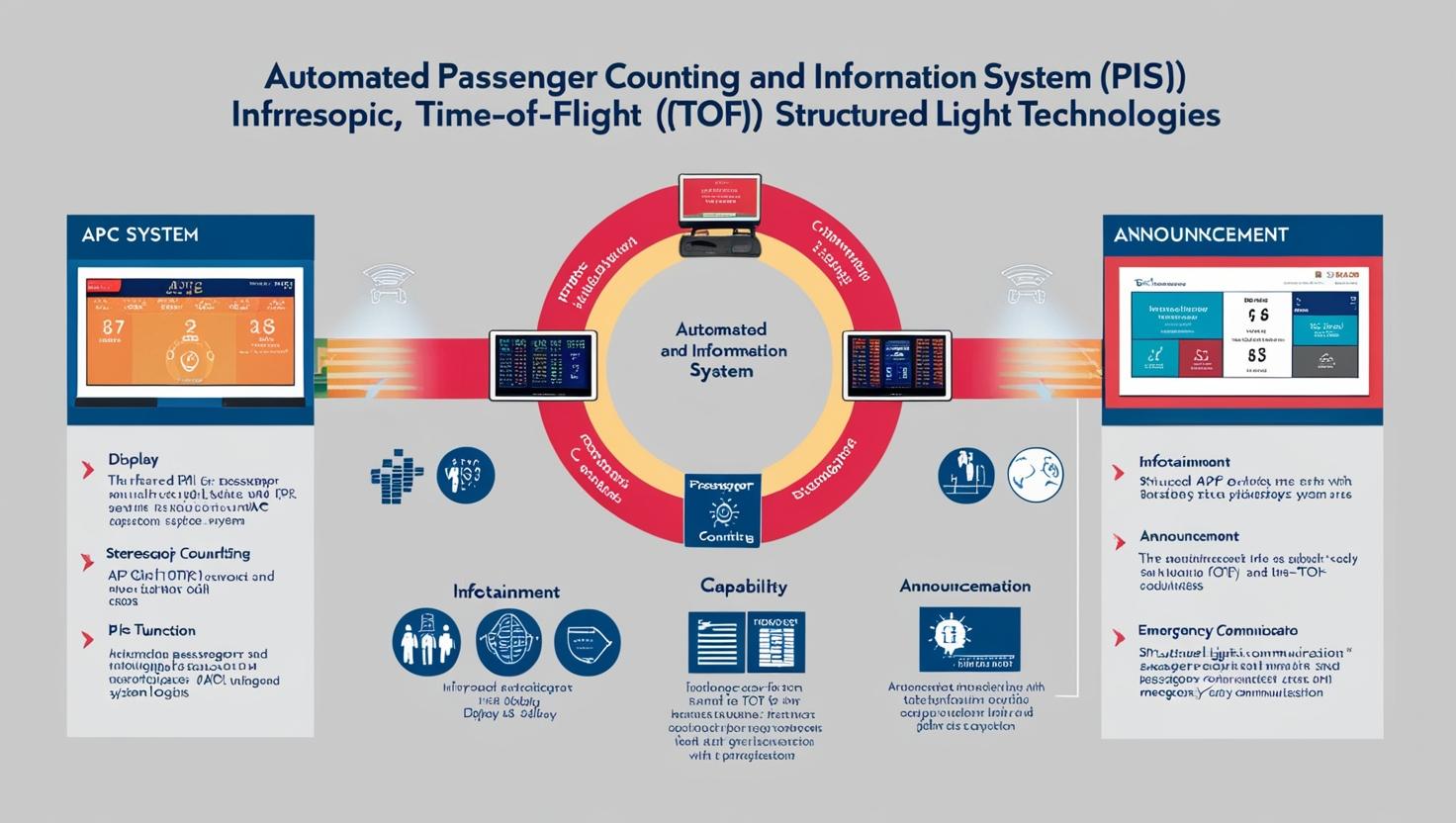The Automated Passenger Counting (APC) market is gaining significant traction as public transportation systems evolve to meet the demands of urbanization, sustainability, and digital transformation. With the global emphasis on smart city development and efficient mobility, transit agencies are seeking precise, real-time data to streamline operations and improve passenger experiences. APC technology, once a niche utility, is now becoming a cornerstone in modern transit ecosystems.

The global automated passenger counting and information system industry is expected to be valued at USD 9.2 billion in 2024 and is projected to reach USD 15.4 billion by 2029; it is expected to grow at a CAGR of 10.7 % from 2024 to 2029. The automated passenger counting, and information system industry is driven by rising demand for public transportation, technological advancements, and government initiatives promoting smart cities
Smart Transit Drives APC Adoption
As cities grow denser and traffic congestion worsens, public transit systems are under increasing pressure to perform efficiently. APC systems—using sensors like infrared beams, ultrasonic waves, or video imaging—allow transit operators to track passenger boarding and alighting accurately. This data is crucial in identifying underused routes, reallocating resources, and minimizing wait times. In the post-pandemic world, APC has also gained importance for supporting social distancing, limiting overcrowding, and enhancing commuter confidence in public safety.
Technological Innovation Enhances Accuracy
Today’s APC systems are powered by cutting-edge technologies such as AI (Artificial Intelligence), machine learning, and IoT (Internet of Things). These advancements allow systems to adapt to complex environments, distinguishing between passenger types, counting with high accuracy even during peak hours, and adjusting automatically to changes in lighting or movement. With AI integration, these systems can provide real-time feedback and predictions, enabling proactive decision-making for transit authorities. Additionally, integration with smart ticketing and vehicle telemetry enhances the depth of operational insights.
Download PDF Brochure @
https://www.marketsandmarkets.com/pdfdownloadNew.asp?id=17856390
Policy Support and Smart City Projects Boost Growth
Government support through infrastructure funding and policy incentives is a major catalyst for APC adoption. In the U.S., federal initiatives like the Infrastructure Investment and Jobs Act (IIJA) are investing billions into transportation innovation. Municipalities are embedding APC systems into broader smart city initiatives, recognizing their role in supporting data-driven planning, emissions reduction, and equitable access to public services. This institutional backing lowers the financial barrier for transit agencies and ensures long-term viability of APC deployment.
Key Sectors Benefiting from APC Systems
The benefits of APC systems are widespread across multiple transportation sectors:
-
Urban Bus Networks: Real-time passenger data improves route efficiency, enhances scheduling accuracy, and helps prevent bus bunching or long wait times.
-
Rail and Metro Systems: High-capacity transit lines utilize APC data to manage crowding, adjust carriage capacity, and inform station staff of peak activity.
-
Airports and Shuttle Services: In dynamic environments like airports, APC systems monitor shuttle loads and streamline passenger movement across terminals, reducing delays and enhancing the traveler experience.

Challenges Ahead
While APC technology offers numerous advantages, challenges remain. One primary concern is the integration with legacy transit systems that may not support digital upgrades seamlessly. There are also privacy and data governance concerns, particularly when video-based systems are used. High initial installation and maintenance costs can deter smaller transit agencies from adopting APCs without external funding. Ensuring data accuracy in varying conditions such as lighting, passenger clustering, and environmental interference is another technical hurdle that manufacturers are continually working to overcome.
Outlook: A Data-Driven Transit Future
As cities move towards sustainable and intelligent transportation solutions, the APC market is expected to see continued growth. The ability to deliver real-time, actionable insights makes APCs invaluable in creating flexible and passenger-centric transit systems. With further advancements in AI, cloud computing, and mobility-as-a-service (MaaS) platforms, APC systems will evolve into even more powerful tools, driving smarter urban planning and contributing to greener, more efficient transport infrastructures worldwide.
FAQ
1. What is an Automated Passenger Counting (APC) system?
An Automated Passenger Counting (APC) system is a technology used in public transportation to count the number of passengers boarding and alighting from vehicles. It typically uses sensors like infrared beams, video analytics, or pressure mats to provide accurate real-time data.
2. Why is APC technology important for public transit systems?
APC technology enables transit agencies to monitor ridership patterns, optimize routes, improve resource allocation, and enhance service reliability. It also supports social distancing efforts by preventing overcrowding and informing scheduling decisions.
3. How do APC systems work?
APC systems use various sensor technologies—such as infrared, ultrasonic, or video-based sensors—to detect and count passengers. The data is then transmitted to central databases for analysis and decision-making by transit authorities.
4. Which sectors benefit most from APC systems?
APC systems are widely used in:
-
Urban buses
-
Metro and rail systems
-
Airport shuttles
-
School buses
-
Tourism and intercity coaches
Each sector uses APC data to improve efficiency, safety, and customer satisfaction.
